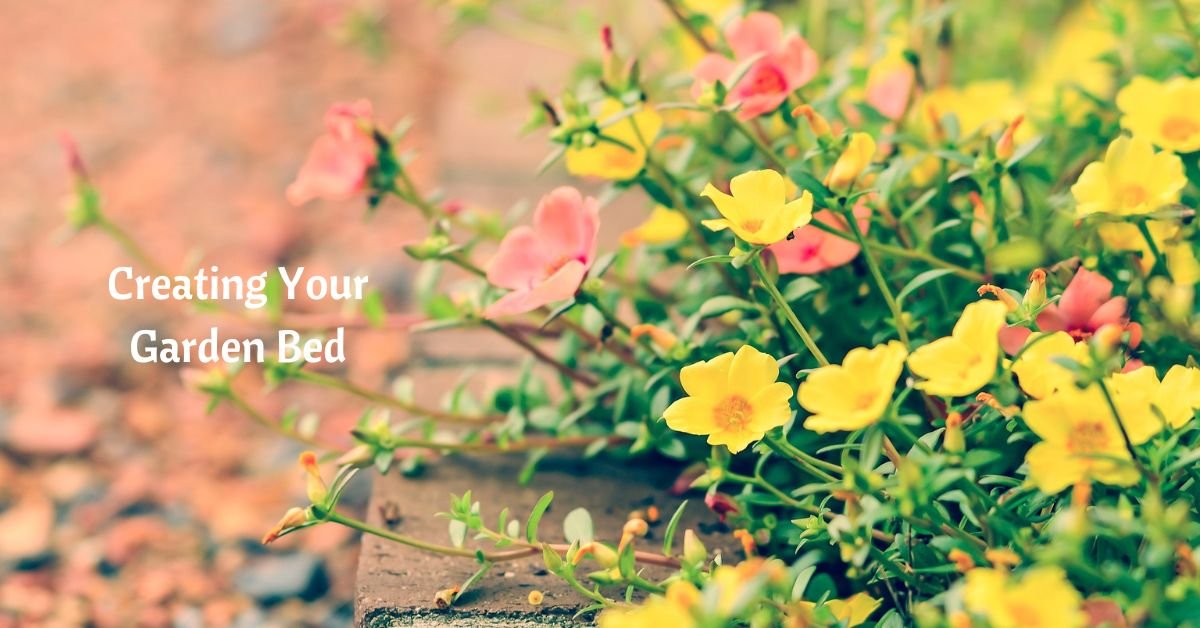Do you dream of turning a portion of your lawn into a vibrant garden bed bursting with flowers, herbs, or vegetables? Converting a section of your lawn into a garden bed is a rewarding project that allows you to make the most of your outdoor space.
In this guide, we’ll walk you through the process, from selecting the ideal location to preparing the soil and making your garden bed flourish.
Choosing the Right Location
Selecting the perfect spot for your garden bed is the first and most crucial step in this transformation process. Here’s what you need to consider:
Size
Determine the size of your garden bed. It can be as small as a few square feet or as large as you desire, depending on your available space and gardening goals.
Sunlight Requirements
Observe the amount of sunlight the area receives throughout the day. Most vegetables and flowers thrive in full sun, which means at least 6-8 hours of direct sunlight daily. However, some plants, like certain herbs or ferns, may prefer partial shade.
Soil Quality
Assess the soil quality in your chosen area. Soil should be well-draining, nutrient-rich, and free from any major obstructions like tree roots or large rocks. You may need to perform a soil test to check its pH and nutrient levels.
Converting Lawn into a Garden Bed
Now that you’ve chosen the location, here are the steps to convert your section of lawn into a flourishing garden bed.
Prepare Your Tools and Materials
Gather the necessary tools, including a shovel or garden spade, a rake, a garden fork, a wheelbarrow, and a garden hose or sprinkler.
Mark the Garden Bed’s Borders
Use a garden hose or string to outline the shape of your garden bed. This will help you visualize the boundaries and ensure a neat design.
Remove the Turf
With a sharp shovel or spade, cut along the marked border to remove the turf. Dig about 4-6 inches deep to eliminate the grass and its roots. You can save the turf for other garden projects or compost it.
Break Up the Soil
Break up the compacted soil underneath the removed turf using a garden fork or a tiller. This will improve aeration and water penetration.
Amend the Soil
Add compost to enrich the soil. Incorporate it thoroughly with the existing soil to improve its fertility and structure.
Level and Shape the Bed
Use a rake to level the soil and shape the garden bed to your desired design. Create gentle slopes if needed for proper drainage.
Edge the Garden Bed
Install edging materials like bricks, stones, or plastic edging to define the borders of your garden bed. This prevents grass and weeds from encroaching.
Mulch the Garden Bed
Apply a layer of mulch, such as wood chips or straw, to help retain soil moisture, suppress weeds, and maintain a consistent temperature.
Plant Your Garden Bed
Finally, it’s time to plant your garden bed. Follow the specific spacing and planting guidelines for the plants you’ve chosen. Water them thoroughly after planting. You can find information about spacing and watering in our articles on individual plants.
Maintain Your Garden Bed
Regularly water your garden bed, keeping the soil consistently moist, but not waterlogged. Adjust the watering schedule based on your region’s climate and the needs of your plants.
Add organic mulch as needed to refresh the top layer and maintain weed suppression. Mulch helps control pests, but be sure to monitor for pests and diseases. Take prompt action if any issues arise.
Fertilize your plants according to their specific requirements, and trim or prune as necessary to promote healthy growth.
Converting a section of your lawn into a garden bed is a wonderful way to create a beautiful and productive outdoor space. By carefully choosing the location, preparing the soil, and following the steps outlined above, you can transform a once-grassy area into a lush garden bed that thrives with flowers, herbs, or vegetables. With dedication and care, your garden bed will flourish and become a delightful addition to your outdoor landscape.









